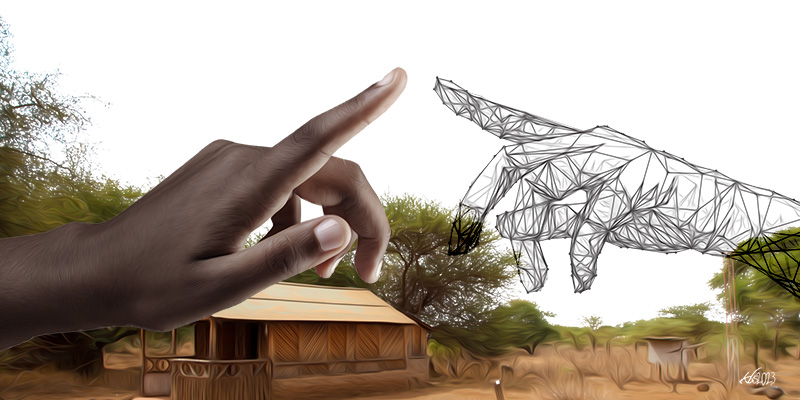On 13 May 2021, the Constitutional and Human Rights Division of the High Court of Kenya handed down an important judgment in David Ndii and Others v Attorney General and Others (BBI judgment). The decision struck down President Uhuru Kenyatta’s the “Constitution of Kenya Amendment Bill, 2020”, engineered through the Building Bridges Initiative (BBI), as unconstitutional. The Constitution of Kenya Amendment Bill was a comprehensive constitutional reform proposal that aimed to introduce some fundamental changes to several chapters of the 2010 Constitution of Kenya to “build a lasting unity in the country.” For example, the redesign of the legislature by bringing the Government back to Parliament, the expansion of the national executive by creating the Office of the Prime Minister and Deputy Prime Ministers, the inclusion of the Leader of the Official Opposition in Parliament, and the creation of 70 new constituencies were among the many changes introduced by the Bill.
In its 321-page judgment, the five-judge Court framed 17 broad issues for determination including the applicability of the Basic Structure Doctrine and its implications for amendment powers, the nature and remits of popular participation in constitution-making, and the responsibility of unconstitutional exercise of public authority. The Court found that the Basic Structure Doctrine is applicable in Kenya, that the Constitution of Kenya Amendment Bill is unconstitutional, and that President Kenyatta violated the Constitution in his attempt to amend it through the BBI.
The BBI judgment has already attracted the attention of several scholars. While this case will be further litigated in the Court of Appeal – and we have to wait and see what the final outcome will look like – the judgment offers some unique jurisprudential insights to the Basic Structure Doctrine and transformative constitutionalism. In this column, I analyze the judgment’s contribution to the theory and practice of transformative constitutionalism.
In its 321-page judgment, the five-judge Court framed 17 broad issues for determination including the applicability of the Basic Structure Doctrine and its implications for amendment powers, the nature and remits of popular participation in constitution-making, and the responsibility of unconstitutional exercise of public authority
One of the main features of constitutions in the global south, including Kenya, is their transformative ethos. In the global south, constitutions are not only devices of constituting and constraining political power, but they are also mechanisms for enabling broader societal transformation. This feature of constitutionalism is called transformative constitutionalism. Although transformative constitutionalism may have more normative appeal and descriptive potential to much of the global south, its subject and extent varies widely, and its significance is not limited to the global south.
Even though the normative commitments, theoretical contours, and interpretive frameworks of transformative constitutionalism have been a subject of discussion for quite some time, Karl Klare’s original account captures its essence: transformative constitutionalism is ‘a long-term project of constitutional enactment, interpretation, and enforcement committed … to transforming a country’s political and social institutions and power relationships in a democratic, participatory, and egalitarian direction’.
As an interpretive project, transformative constitutionalism may require a break from the liberal individualistic conception and its formal distinction between law and politics. As a broader constitutional vision, it mainly aims to transform rather than preserve the constitutional order and its animating socio-economic, political, and cultural systems. While the BBI judgment is transformative, it is transformative in a unique Kenyan way, and this is what makes the judgment so important to the theory and practice of transformative constitutionalism.
Transformative Constitutionalism as a Jurisprudence of History
Out of the 17 broad issues the Court framed for determination, the first two are the most relevant ones to transformative constitutionalism and are related to the Basic Structure Doctrine: Is the Basic Structure Doctrine applicable in Kenya, and if so, what are its implications for amendment powers in Articles 255 to 257 of the Kenyan Constitution?
To answer these questions, the Court first developed what it called a “canon of interpretation” that includes the underlying ethos of transformative constitutionalism: the interpretation of a transformative constitution, like Kenya, requires the rejection of both liberal formalism and the distinction between “law” and “non-law” matters.
Within such canon of interpretation, the Court resorted to history to determine whether the Basic Structure Doctrine is applicable in Kenya. After carefully examining the constitutional history of Kenya since independence – the history of “hyper-amendment culture”, one-party system, imperial presidency, and elite entrenchment – along with the specific history and processes of constitution-making – public participation and people-driven constitution-making processes and efforts, the Court concluded that “Kenyans intended to protect the Basic Structure of the Constitution they bequeathed to themselves in 2010 from destruction through gradual amendments” Accordingly, the Court found that “there are substantive limits on the constitutional power to amend the Constitution”. The Court further stated that:
To be sure, there is no clause in the Constitution that explicitly makes any article in the Constitution un-amendable. However, the scheme of the Constitution, coupled with its history, structure and nature creates an ineluctable and unmistakable conclusion that the power to amend the Constitution is substantively limited. The structure and history of this Constitution makes it plain that it was the desire of Kenyans to barricade it against destruction by political and other elites. As has been said before, the Kenyan Constitution was one in which Kenyans bequeathed themselves in spite of, and, at times, against the Political and other elites.
As a result, the Court held, the Basic Structure of the Constitution, which “consists of the foundational structure of the Constitution as provided in the Preamble; the eighteen chapters; and the six schedules of the Constitution” that form “the core edifice, foundational structure and values of the Constitution”, which could not be exhaustively listed ex-ante but determined on a case-by-case basis cannot be amended through Articles 255 to 257, i.e., through articles that regulate constitutional amendment. The Basic Structure of the Constitution can only be amended “through a similarly informed and participatory process” through the exercise of “Primary Constituent Power”, which is not bound by previous constitutional rules. The Court builds the Basic Structure Doctrine primarily from the constitutional biography of the nation and the ordinary Kenyans’ quest for and right to meaningfully participate in the constitution and reconstitution of their nation.
A Procedural Turn in Transformative Constitutionalism
If the Court’s use of “radical social history” makes it “an example par excellence of transformative constitutionalism”, as Gautam Bhatia beautifully put it, its further engagement with the Basic Structure Doctrine ushers in a procedural turn in transformative constitutionalism, which could open valuable avenues not only to protect constitutionalism but also to advance a more transformative constitutional vision that reflects the will of the people at any given time without necessarily undergoing war or violent revolution.
According to the Court, “the sovereignty of the People in constitution-making is exercised at three levels”: two are within the bounds of the Constitution and one is outside of it. First, according to the Court, the Basic Structure of the Constitution can only be changed through the exercise of “Primary Constituent Power” – i.e., an extraordinary power to radically change the Constitution without being limited by prior constitutional rules or procedures. In Kenya, while this “Primary Constituent Power” is substantively free to change the Basic Structure of the Constitution, it is procedurally limited. It can only be exercised “after four sequential processes are met: civic education, public participation, constituent assembly debates, and referendum”.
One of the main features of constitutions in the global south, including Kenya, is their transformative ethos. In the global south, constitutions are not only devices of constituting and constraining political power, but they are also mechanisms for enabling broader societal transformation.
Second, other parts of the Constitution, which do not constitute the Basic Structure, could be amended either by the “Secondary Constituent Power” – that is “through a referendum subsequent to public participation and Parliamentary process” or by the “Constituted Power” that is by Parliament, both following the amendment procedures provided in Articles 255 to 257 of the Constitution.
The invention of a normatively open and procedurally regulated “Primary Constituent Power” as the defender of the Basic Structure of the Constitution sheds light not only on transformative constitutionalism’s condition of possibility in bringing about a fundamental constitutional change, but also shows its potential in preventing the fermentation of a violent force (such as war or revolution) that brings about and structures the constituent power in the first place. This is particularly important not only to Kenya, but also to much of the global south, where societies may, first, not afford violent revolutions that could destroy the positive socio-economic and political gains and, second, could not be sure of the dividends of the post-revolutionary constitutional outcomes.
Preservative Constitutionalism as Transformative Constitutionalism
The Court found the BBI engineered Constitution of Kenya Amendment Bill unconstitutional because it falls outside of the three permissible methods of constitutional amendment noted above. It held that the BBI process was initiated by the President, in the words of the Court, who cannot be both “the promoter and the referee” or the “player and the umpire in the same match”.
Essentially, the BBI judgment is preservative of the 2010 Constitution of Kenya and its animating values, principles, and structures, which emanate from and are grounded in the notion of popular sovereignty manifested in the public participation and people-driven constitution-making processes and outcomes – the lack of which had troubled Kenya until 2010. While the Constitution of Kenya may require some improvements, like any constitution in the world, it is important to reiterate that it is almost peerless on the African continent both in the way it came into being and in the way it has structured political power and authority. Therefore, a theory of constitutional adjudication that preserves this constitutional framework and vision is no less transformative than an adjudication that enforces socio-economic rights or advances some progressive and egalitarian ideals.
While transformative constitutionalism has been considered as a ‘metaphor of crossing the bridge’ from ‘where we stand today’, largely being the ‘geography of injustice and inequality’, to a ‘promised land of more justice and equality’, the BBI judgment makes it clear that “protecting the bridge” is as transformative as “enabling its crossing”. Finally, if South Africa has exported the notion of “transformative constitutionalism 1.0” in the 1990s to the field of comparative constitutionalism, Kenya has provided “transformative constitutionalism 2.0.” that could expand the theory and practice of transformative constitutionalism in the years to come. The BBI judgment, beyond its jurisprudential contribution to comparative constitutional studies, may inspire courts on the African continent to execute their constitutional duties.
–
This article was first published in I·CONnect: the blog of the International Journal of Constitutional Law.








